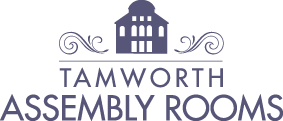History
In the Beginning
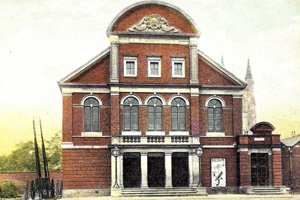 It was on October 8th 1889, that Tamworth MP Philip Muntz officially opened Tamworth Assembly Rooms.
It was on October 8th 1889, that Tamworth MP Philip Muntz officially opened Tamworth Assembly Rooms.
The building was first proposed by councillors as a fitting monument to celebrate Queen Victoria’s golden jubilee in 1887. The Victorian population of Tamworth was also growing and needed a larger civic venue than the town hall built by Thomas Guy in 1701. An architect, Nicholas Joyce, was found to draw up plans for the creation of a grand new Assembly Rooms building and land was found in Tamworth town centre to the west of St. Editha’s church.
To meet the cost the councillors turned to the people of Tamworth. Many generous donations were made and the £5,500 needed to build Tamworth Assembly Rooms was eventually found. The Mayor of Tamworth, Harry Olver was a keen supporter of the project and a stone can still be seen at the north-west corner marking the moment that he laid the first stone of the building.
Finally, two years after the Golden Jubilee Tamworth Assembly Rooms was opened and the town had a grand new public building to be proud of.
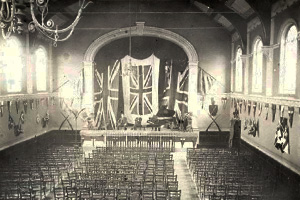 Early years
Early years
No sooner were the doors open than the people of Tamworth were hosting all manner of events in their brand new Assembly Rooms.
Many dances and public meetings were held, local organisations such as the Volunteer Fire Brigade, Tamworth Cricket/ Athletic Club, St. Editha’s Church, and the Bolebridge Street Mission all used the building for their annual balls or fundraisers. Musical and dramatic performances were put on by Local groups such as the Tamworth Corel Society and national touring groups such as Madame Lloyds Italian Choir and Dioramas.
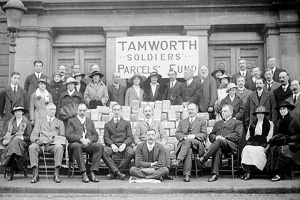 The World Wars and between them
The World Wars and between them
Tamworth Assembly Rooms soon became the towns premier venue for entertainment and civic events but with the outbreak of the First World War it took on a far more serious role as base for army recruits. Around 200 soldiers at a time were stationed in the building whilst receiving training at the Kingsbury rifle range. Despite this important military role there was still time for dances and performances in the building during the war, many of which were fundraising events to support the troops.
The interwar years saw many changes in society and ‘the Assems’ played its part in some important national events. Suffragette Miss Pym is known to have campaigned on the steps of Tamworth Assembly Rooms for women’s right to vote. In the 1926 it was the general strike that was national news and in Tamworth the Assems was in use as a soup kitchen feeding the hunger strikers. A very different social event occurred when the Duke of York, the future King George VI was entertained at Tamworth Assembly Rooms during his visit to open a new war memorial in the town.
As the Second World War began Tamworth Assembly Rooms again played a part in the war effort. When war broke out in 1939 the ‘Assems’ were let for civil defence; a report centre was set up inside, and Shannons’ girls packed respirators for the Women’s Voluntary Service to distribute. Dances at the Assems continued throughout the war. For American GI’s based at the nearby Whittington barracks, they provided a rare chance to fraternise with the locals.
 Rock ‘n’ Roll at the ‘ssems
Rock ‘n’ Roll at the ‘ssems
Tamworth Assembly Rooms remained a place for letting the hair down even during the austerity of the post war era and within a few years Rock ‘n’ Roll reached Tamworth. Tamworth’s long tradition of local bands came into its own with regular concerts at the ‘ssems’. The reputation for live music was such that many up and coming groups from across the country played the stage. By the early 1960’s a young promoter named Vince Baker was bringing little know acts to the Assems such as the The Beatles and The Rolling Stones that would go on to become some of the biggest acts in the world.
Although it had a fantastic reputation for live music the building also continued to host a great variety of shows. Groups like Tamworth Arts Club began to put on regular performances.
Recent Times
From the 1970’s to 1990’s Tamworth Assembly Rooms went through a quiet period. Although local groups, particularly Tamworth Arts Club continue to use the building, and DJ nights and wrestling were put on, it was no longer hosting the regular dances and big Rock and Roll acts.
In recent times there has been a renewed interest and effort to use this fantastic historic building. Tamworth Arts and Events team have developed a diverse programme of events and activities increasing the use of the building by the local community.
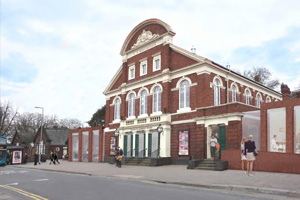 The Future
The Future
Tamworth Assembly Rooms was in remarkably good shape after 125 years but there were important maintenance work and repairs that needed to happen. The Victorian building was also not designed with 21st century users in mind so Tamworth Borough Council embarked on a major redevelopment and extension of the building, supported by the Heritage Lottery Fund, which saw it close for a time while the works were completed. This now ensures that the building is ready to serve the people of Tamworth for another 125 years whilst preserving and celebrating its magnificent heritage.
Image by Rodney Melville and Partners
